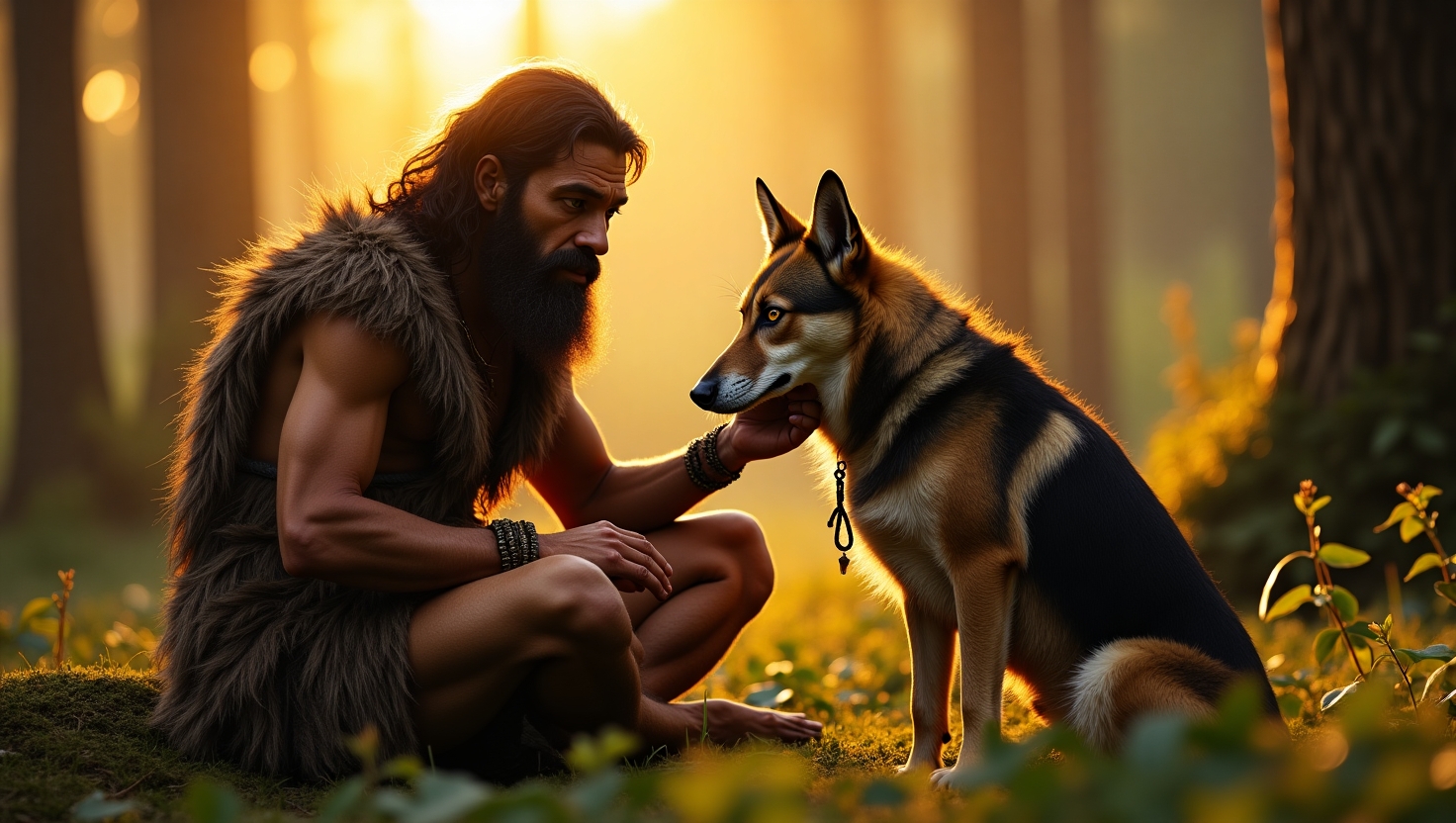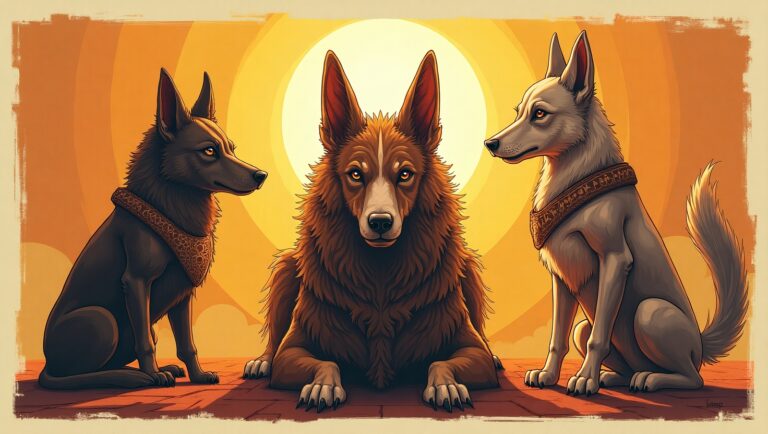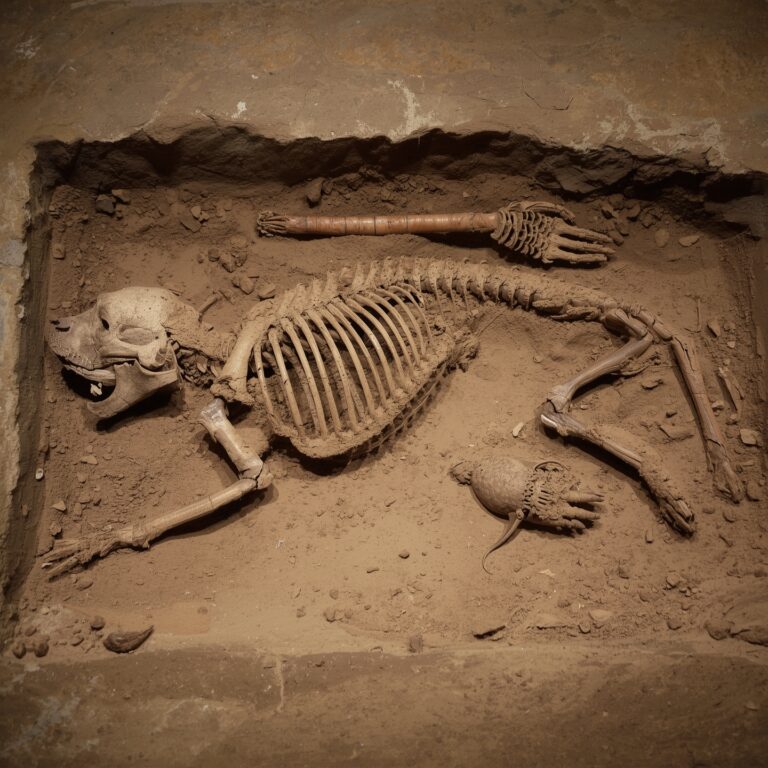Origins and Domestication of Dogs: A Deep Dive into Humanity’s First Companion

1. Introduction to Dog Domestication
The domestication of dogs marks one of the most transformative relationships in human history. Unlike livestock, dogs were not bred initially for meat or fur but for companionship and utility. Understanding the origins of dogs provides insight into how humans shaped animal evolution — and how animals, in turn, influenced human societies.
2. Evolutionary Ancestors of Domestic Dogs
All modern domestic dogs (Canis lupus familiaris) are descended from grey wolves (Canis lupus). While dogs and wolves share over 98.8% of their DNA, crucial differences in behavior, skull morphology, and social cognition separate the two. Genetic divergence between the two species likely began 20,000 to 40,000 years ago, during the Upper Paleolithic period.
3. The Timeline of Dog Domestication
Radiocarbon dating and mitochondrial DNA suggest that dogs were first domesticated between 15,000 and 30,000 years ago. One of the oldest known dog burials, found in Bonn-Oberkassel, Germany, dates to around 14,200 years ago, indicating an already established human-dog bond at that time.
4. Geographical Hotspots of Early Domestication
Eurasia remains the primary candidate for early dog domestication, with key archaeological sites in:
- Siberia (e.g., Zhokhov Island)
- The Middle East (e.g., Natufian sites)
- Europe (e.g., Goyet Cave, Belgium)
- China (Yangtze River Basin)
Some scholars propose multiple domestication events, while others support a single domestication followed by genetic dispersion.
5. Role of Hunter-Gatherer Societies
In early hunter-gatherer societies, humans likely began to tolerate wolf-like canids that scavenged near camps. Over generations, the friendliest and least aggressive wolves began to associate with humans — forming the basis of early proto-dogs. These dogs were useful for hunting, guarding, and even providing warmth.
6. The Mutualism Hypothesis
The mutualism hypothesis posits that dog domestication occurred as a result of cooperative benefits. Early canines benefited from access to food scraps at human settlements, while humans gained companions for hunting and early warning systems. This mutual survival advantage paved the way for long-term domestication.
7. Key Archaeological Discoveries
Several significant finds have shaped our understanding:
- Bonn-Oberkassel Dog (Germany): Buried alongside humans 14,200 years ago.
- Uyun al-Hammam (Jordan): Oldest known dog burial, dating back 11,000 years.
- Ain Mallaha (Israel): 12,000-year-old remains of a puppy cradled in a human’s arms.
These burials indicate a deep emotional connection between early humans and dogs.
8. The Genetic Domestication Bottleneck
Genomic studies reveal a severe bottleneck effect in early dog populations, suggesting that a small group of wolves gave rise to the domestic dog lineage. Mitochondrial DNA analysis has also pointed to divergence from wolves before agriculture, meaning dogs were domesticated while humans were still nomadic.
9. The Behavioral Evolution of Early Dogs
Domesticated dogs developed behavioral traits vastly different from wolves:
- Reduced fear and aggression
- Enhanced social cognition
- Pack bonding with humans
This transformation parallels Dmitry Belyaev’s silver fox experiment, where selective breeding for tameness over generations resulted in foxes that acted—and even looked—more like dogs.
10. Differences Between Wolves and Early Dogs
Significant morphological differences emerged, including:
- Shorter snouts
- Smaller brains
- Floppy ears and curly tails
Behaviorally, early dogs became more obedient, social, and tolerant of humans—traits not observed in wild wolves.
11. The Role of Natural vs. Artificial Selection
Natural selection favored wolves that were less fearful of humans. Over time, human selection intensified this process through selective breeding, whether conscious or unconscious. Unlike livestock, early dog breeding prioritized behavior over appearance, especially for roles in hunting and protection.
12. The Spread of Dogs With Human Migration
As humans migrated across continents, dogs followed. Genetic studies show:
- Early dogs traveled with humans to the Americas around 10,000 years ago
- Pacific Island dogs suggest later introduction by seafaring cultures
- Distinct genetic lineages in East Asia, Europe, and Africa highlight the global dispersion of dogs
13. Early Roles of Dogs in Human Societies
Dogs were multifunctional tools:
- Hunters in forested and snowy regions
- Herders in post-agricultural societies
- Guards for early settlements
In many communities, dogs were also ritual animals, buried ceremonially or painted in early cave art.
14. The Emergence of Distinct Dog Breeds
By Neolithic times, dogs began to be bred for specific purposes:
- Sighthounds for chasing prey
- Mastiffs for guarding
- Spitz-types for cold environments
Ancient breeds like the Saluki, Basenji, and Akita show that functional divergence predates modern breed standards.
15. The Influence of Agriculture on Dog Domestication
The shift to sedentary farming societies created new roles for dogs:
- Pest control in grain storage
- Herding livestock
- Companionship in domestic spaces
This period likely saw increased human-directed breeding, focusing on behavioral compatibility.
16. Domestication Syndrome in Dogs
Domestication syndrome refers to physical and behavioral traits that emerge in domesticated species:
- Reduced adrenal response (less stress)
- Shortened muzzles and teeth
- Increased sociability
These changes are driven by neural crest cell development, linking physical and behavioral evolution.
17. Cross-Cultural Perspectives on Dogs
Across ancient civilizations:
- In Egypt, dogs were associated with Anubis, god of the afterlife.
- In China, the Pekingese was bred as a royal companion.
- In Mesoamerica, Xoloitzcuintli dogs were believed to guide souls to the underworld.
Dogs held symbolic, religious, and utilitarian roles across diverse societies.
18. Challenges in Tracing Domestication
Fossil ambiguity, hybridization with wolves, and regional interbreeding complicate the story. Many early canid fossils are hard to classify as dog or wolf due to overlapping features. Modern ancient DNA (aDNA) and radiocarbon calibration help clarify timelines, but gaps remain.
19. Role of Modern Genomics in Dog Research
Recent breakthroughs include:
- Whole-genome sequencing of over 100 dog breeds
- Discovery of shared genes influencing tameness and intelligence
- Use of machine learning to map canine migration patterns
Projects like Dog10K aim to sequence 10,000 genomes to fully map canine evolutionary history.
20. The Debate Over Single vs. Multiple Domestications
Some researchers, like Greger Larson, support the multiple-origin hypothesis, suggesting independent domestications in Europe and East Asia. Others argue for a single-origin model, where dogs were domesticated once and spread through human networks.
Genetic mixing across regions likely blurred these original lineages.
21. Ethical Reflections on Domestication
Domestication created interdependence, but also introduced ethical issues:
- Modern puppy mills exploit artificial breeding
- Inbreeding in purebreds leads to health problems
- Genetic editing (CRISPR) raises questions about human control over life
Understanding our history with dogs compels us to act as responsible stewards of their evolution.
22. Lessons from the Domestication Process
The dog serves as a model for domestication science, revealing:
- How behavioral traits evolve
- The role of neural development in sociability
- Applications for animal welfare, genetics, and even human evolution
Dogs highlight how co-evolutionary relationships can shape entire species.
23. Modern Dog Breeds and Their Ancestry
With over 400 recognized breeds, modern dogs vary dramatically in appearance and behavior. Yet many retain genetic markers from ancient lineages:
- Basenji from Central Africa
- Afghan Hound from the Middle East
- Chow Chow from ancient China
DNA tests like Embark and Wisdom Panel now allow dog owners to trace their pet’s ancestry.
24. The Future of Canine Evolution
The next chapter in dog evolution may be driven by biotechnology:
- Gene therapy for hereditary diseases
- Cloning (as done with Barbra Streisand’s dogs)
- Behavioral modification via AI-based training tools
We must balance innovation with ethics, remembering that the bond was born from cooperation, not control.
25. Cultural Legacy of Dogs Through Time
Dogs appear in myths, folklore, literature, and visual arts:
- Odysseus’ dog Argos waited 20 years for his return.
- Hachiko in Japan waited daily for a deceased owner.
- Paintings from ancient Rome to Renaissance Europe depict dogs as loyal companions.
They are more than animals — they are cultural icons.
26. Domestication’s Impact on Canine Cognition
Dogs evolved remarkable social intelligence, including:
- Understanding human facial expressions
- Responding to voice tone and gesture
- Following eye gaze and pointing cues
These traits surpass those found in any other domesticated animal, including primates in some contexts.
27. Summary of Key Findings
- Dogs were likely domesticated 15,000–30,000 years ago from grey wolves.
- Domestication was driven by mutual benefits in early human societies.
- Genetic and archaeological evidence support both single and multiple domestication hypotheses.
- Dogs became functional partners, not just pets.
- Their cognitive, behavioral, and genetic evolution is unparalleled in the animal kingdom.
28. References and Suggested Reading
- “How the Dog Became the Dog” – Mark Derr
- “Dogs: A Startling New Understanding” – Raymond and Lorna Coppinger
- Nature & Science journal articles on canine genomics
- Dog10K Genomes Project – www.dog10kgenomes.org
- National Geographic Special: Domesticated Dogs





